#Charles de Steuben
Explore tagged Tumblr posts
Text
How to Read like a Writer

When reading as a writer, you must question every single choice that the author decided to keep in the final draft of the story. You must assume that it was intentionally left there to hold a clue, convey a feeling, connect ideas, and/or point to an overall theme. Here's a starter pack of questions to ask when reading as a writer, broken down into the 3 main elements of storytelling:
SETTING
Why did the author choose this setting?
Does the setting affect the story? If yes, in what way?
How do the characters interact with the setting?
Could the setting be different? If yes, how would that affect the overall story?
CHARACTERS
Did the author develop all of the main characters in the story?
What makes the characters relatable?
How do the characters reflect the theme(s) of the novel?
How do the characters change throughout the story?
Are you satisfied with the way the characters progress or are there opportunities to do more?
PLOT
What makes you care about what happens to the characters in this story?
What conflicts (internal and external) cause the characters to act the way they do?
Are the characters' choices moving the story forward naturally or is the author forcing the characters to do something that may not be natural to them?
How does the plot contribute to the theme of the story?
How does the author build momentum towards the climax?
How long does the author give between climax and resolution?
OVERALL
How did the author transition from one scene to the next?
How did the pacing change through the story?
Do you feel like the pacing fits the moment?
Did you notice the flow of language?
Did it shift to match the pace, tone, or mood of the scene?
What did you think of the author's word choice?
Did it enhance the reading experience and, if so, how?
What part of the story hooked you and why?
What character grabbed you and why?
What did the author choose to show in the scene?
What do you wish they did show?
How did the point of view affect the way you experienced the story?
Could a switch in point of view have improved the story? If so, how?
What stylistic choices did the author make with the prose, and how did those choices impact the overall storytelling?
What do you like about this story?
What did the author do well?
What wasn't done well?
What tone and mood do the writer use throughout the story and how does that affect your reading experience?
Be sure to defend your answer with more than “yes” or “no.” The answers to these questions will improve your writing.
Reading like a writer takes practice. After all, you’ve spent decades reading as a “reader,” i.e. the intended audience. Switch up your focus and approach content from the writer’s perspective. It will make you a better writer. Put the above tips into practice and you’ll see how quickly your storytelling abilities improve, specifically pacing, plotting, and characterization.
Source ⚜ Writing Notes & References ⚜ Tips & Advice ⚜ Rhetoric Active Reading ⚜ Historical Research ⚜ Critical Reading
#writing notes#writeblr#dark academia#spilled ink#writing reference#literature#writers on tumblr#writing prompt#poets on tumblr#poetry#creative writing#fiction#writing ideas#writing inspiration#writing tips#charles de steuben#writing resources
322 notes
·
View notes
Text
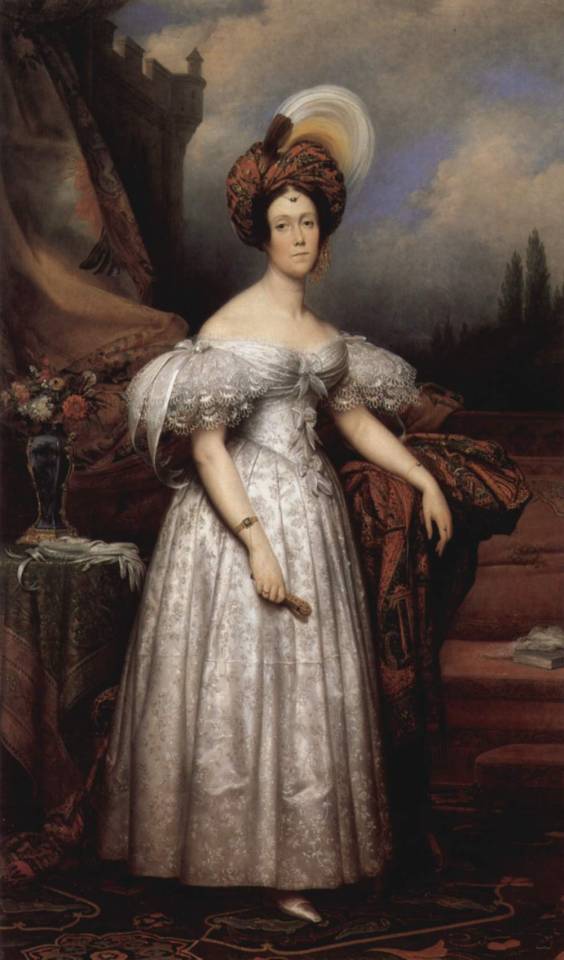
Marquise De Béthisy Als Orientalin painted by Charles de Steuben (1788 - 1856)
#art history#painting#art#artwork#museums#history#culture#vintage#curators#romanticism#charles de steuben
55 notes
·
View notes
Text
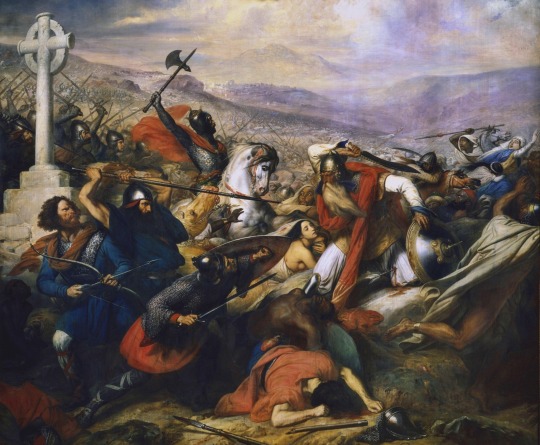
The Battle of Tours, October 732 by Charles de Steuben
#battle of tours#battle of poitiers#art#charles de steuben#umayyad#invasion#gaul#franks#frankish#charles martel#aquitainian#muslim#christian#history#europe#european#germanic#abdul rahman al ghafiqi#umayyad caliphate#france#western europe#christianity
62 notes
·
View notes
Text
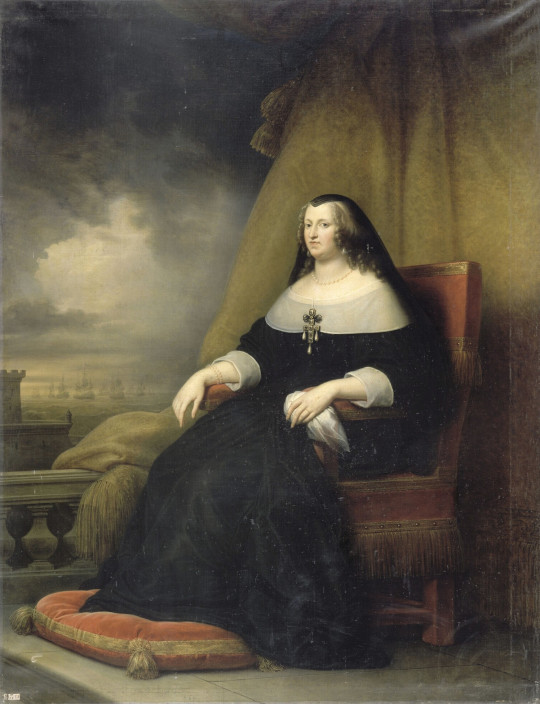
Anna of Austria. By Charles de Steuben.
#charles de steuben#royaume de france#anne d'autriche#reine de france#vive la reine#infante d'espagne#maison de habsbourg#régente de france#maison de bourbon#anne of austria
6 notes
·
View notes
Text

Battle of Poitiers, October 732 (Charles de Steuben, 1837)
7 notes
·
View notes
Text

Karl Martell in der Schlacht von Tours Charles de Steuben 1837
0 notes
Text
04 Works, The art of War, Charles de Steuben, Eugène Delacroix and Julius Schnorr von Carolsfeld's Bataille de Poitiers, with Footnotes
Charles de Steuben (1788–1856)Bataille de Poitiers, en octobre 732, c. 1837Oil on canvasheight: 4.6 m (15.2 ft); width: 5.4 m (17.7 ft)Palace of Versailles Muslim empire reaches its furthest extent. Battle of Tours prevents further advance northwards… Please follow link for full post
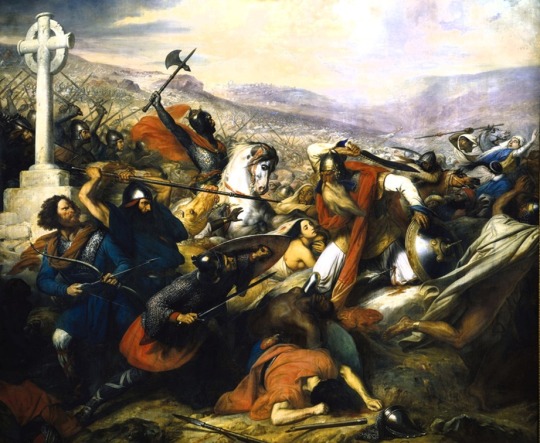
View On WordPress
#Arthistory#Artists#Biography#Charles de Steuben#fineart#footnotes#History#Julius Schnorr von Carolsfeld#Paintings#war#Zaidan
1 note
·
View note
Photo

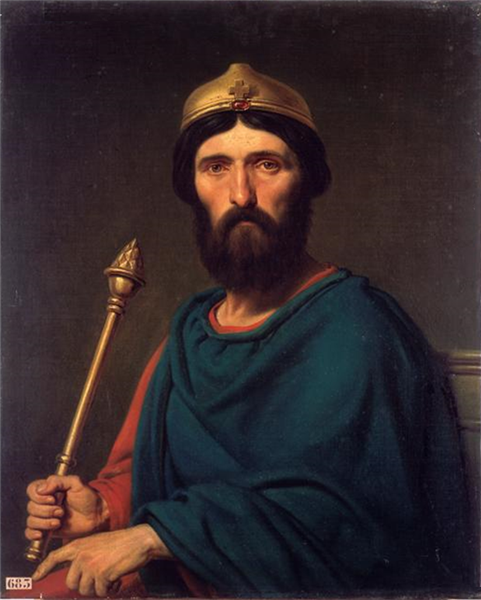
Home Alone dir. by Chris Columbus, written/prod. by John Hughes (1990) + Louis IV of France by Charles de Steuben
The English speaking peoples bring other preconditions to what we may call the people's will, the voting system, than, say, the French — the Latin peoples in general. The Latin peoples, especially the French, certainly carried out the revolution of the eighteenth century, but the French people today are more royal than any other. To be royal doesn't only mean to have a king at the top. Naturally a person whose head has been cut off cannot run around; but the French as a people are royal, imperialistic, without having a king. It has to do with the mood of soul. This “all are one” feeling, the national consciousness, is a real remnant of the Louis IV mentality.
—Rudolf Steiner, The History and Actuality of Imperialism: Lecture I
#Louis IV#Louis IV of France#anthroposophy#spiritual science#Charles de Steuben#John Hughes#Macaulay Culkin#Chris Columbus
1 note
·
View note
Text
So I was just doing some calculations, right?

But, uhm..

Okay bbg I'm sorry I love you but.... Uhm...
Uhm... Okay no my head actually physically hurts🩵
#amrev#baron von steuben#von steuben#continental army#valley forge#American Revolution#pierre etiénne du ponceau#pierre duponceau#james fairlie#william north#benjamin walker#ben walker#pierre charles l'enfant#i think thats his name idk#Lazare-Jean Théveneau de Francy#Louis de Pontiere#i forgot nathan fry but he was 24#queer history#gay stuff#wtf#so uh#help i forgot who else i included ill just edit this later#pierre du ponceau#thats not good#erm
14 notes
·
View notes
Text

Napoleon on St. Helena, by Charles de Steuben, 1828
New Year’s Day was a more important festival than Christmas in 19th century France. Families gathered, friends visited and gifts were exchanged (see New Year’s Day in Paris in the 1800s). It was thanks to Napoleon that January 1st was celebrated in France. The New Year’s celebrations had been abandoned in 1793, when the French Republican calendar was adopted. Each Republican year started on the autumnal equinox in September, without fanfare. Napoleon’s official celebration of New Year’s Day in 1800 assured the French people that the Revolution was over.
Napoleon’s first New Year’s Day in exile on St. Helena in 1816 was much less lively. According to Count de Las Cases:
On New Year’s Day we all assembled about ten o’clock in the morning, to present the compliments of the season to the Emperor. He received us in a few moments. We had more need to offer him wishes than congratulations. The Emperor wished that we should breakfast and spend the whole day together. He observed that we were but a handful in one corner of the world, and that all our consolation must be our regard for each other. We all accompanied the Emperor into the garden, where we walked about until breakfast was ready. At this moment, his fowling-pieces, which had hitherto been detained by the Admiral [Cockburn], were sent back to him. This measure, on the part of the Admiral, was only another proof of the new disposition which he had assumed towards us. The guns could be of no use to the Emperor; for the nature of the ground, and the total want of game, rendered it impossible that he could enjoy even a shadow of diversion in shooting. There were no birds except a few pigeons among the gum-trees, and these had already been killed, or forced to migrate, by the few shots that Gen. Gourgaud and my son had amused themselves in firing.
Napoleon sent the Balcombe family, with whom he had stayed prior to moving to Longwood House, some presents. Their daughter Betsy recollected:
The emperor possessed among his suite the most accomplished confiseur in the world. Mr. Piron daily supplied his table with the most elaborate, and really sometimes the most elegant designs in patisserie – spun sugar, and triumphal arches, and amber palaces glittering with prismatic tints that looked as if they had been built for the queen of the fairies, after her majesty’s own designs. Napoleon often sent us in some of the prettiest of these architectural delicacies, and I shall always continue to think the bon-bons from the atelier of Monsieur Piron more exquisite than anything I ever tasted…. On New Year’s Day a deputation, consisting of the son of General Bertrand, Henri, and Tristram [Tristan], Madame Montholon’s little boy, arrived with a selection of bon-bons for us, and Napoleon observed that he had sent his Cupidons to the Graces. The bon-bons were placed in crystal baskets, covered with white satin napkins, on Sevres plates. (2)
Betsy later added:
We always made a point of riding to Longwood every New Year’s day, to wish the emperor a happy new year, and we dined with him or Madame Bertrand, though more frequently with the former. I recollect one New Year’s day I had been anticipating a present from the emperor all morning, and as the day wore on, my hopes began to wax faint, and I was beginning to make up my mind to have nothing new and pretty to feast my eyes upon, when Napoleon himself waddled into Madame Bertrand’s room, where my sister and I were seated, and perhaps rather enviously viewing some elegant souvenirs of which the emperor had made the countess a present that morning. In his hand were two beautiful Sèvres cups, exquisitely painted, one representing himself in Egypt, in the dress of a Mussulman; upon the other was delineated an Egyptian woman drawing water. ‘Here, Mesdemoiselles Betsee and Jane, are two cups for you; accept them as a mark of the friendship I entertain for you both, and for your kindness to Madame Bertrand.’
Happy New Year!
25 notes
·
View notes
Text

Eugene de Beauharnais receiving his father's sword from Napoleon Bonaparte
by Charles de Steuben
125 notes
·
View notes
Text
During the American Revolutionary War, the Continental Army had sixty-four brigadier generals, of which twenty were promoted to major general. Eleven of the brigadiers died in combat or from an illness during the war, and the British captured nine of them.
Some of the most notable brigadier generals included Nathanael Greene, who was known for his strategic vision and his successful campaign in the Southern theatre; Benedict Arnold, who initially fought for the American cause but later defected to the British side; Anthony Wayne, who was a skilled tactician and played a key role in the capture of Stony Point; Daniel Morgan, who was known for his unconventional tactics and his success in the Battle of Cowpens; and Horatio Gates, who was a controversial figure but who played a key role in the victory at Saratoga. Other notable brigadier generals included John Sullivan, who led the successful campaign against the Iroquois Confederacy; William Smallwood, who fought in several key engagements in the mid-Atlantic region; and Lachlan McIntosh, who played a role in the defense of Charleston and the Southern theatre. Overall, the brigadier generals of the Continental Army were a diverse group of leaders who contributed to the eventual American victory in many different ways.
Several foreign-born generals served in the Continental Army during the American Revolution, including: Friedrich Wilhelm von Steuben. A Prussian drill master who played a key role in transforming the Continental Army into a professional fighting force. Johann de Kalb. A Bavarian-born French officer who served as a general in the Continental Army. Gilbert du Motier, Marquis de Lafayette. A French officer who served as a major general in the Continental Army. Michael Kovats de Fabriczy. A Hungarian nobleman and cavalry officer who served in the Continental Army. Tadeusz Kościuszko. A Polish military engineer. Chief Engineer with the Southern Department of the Continental Army. Charles Lee. A British soldier of fortune who was appointed the third-highest ranking general in the Continental Army.
There is no Brigadier General James Fraser who served as a high-ranking officer in the Continental Army; he is a fictional character from the fiction novel "Outlander" by Diana Gabaldon. Jamie Fraser is not a real person; he is a creation of the author. However, Gabaldon was inspired by a real individual when developing her novel and later the series.
Posted 15th December 2024
9 notes
·
View notes
Text

Portrait of Countess D'ash painted by Charles de Steuben (1788 - 1856)
#art#art history#artwork#culture#curators#history#museums#painting#romanticism#vintage#charles de steuben
53 notes
·
View notes
Photo

Calvary by Charles de Steuben
#Jesus Christ#The Lord#Jesus of Nazareth#Jesus the Christ#Lord Jesus Christ#Son of God#Son of Man#The Messiah#Christ the Lord#Man of Sorrows#The Lamb of God#crown of thorns#Calvary#The Passion of Christ#The Passion of Jesus Christ#biblical art#Christian art#religious art#Christianity#faith#art
64 notes
·
View notes
Text
Events 2.23 (before 1940)
303 – Roman emperor Diocletian orders the destruction of the Christian church in Nicomedia, beginning eight years of Diocletianic Persecution. 532 – Byzantine emperor Justinian I lays the foundation stone of a new Orthodox Christian basilica in Constantinople – the Hagia Sophia. 628 – Khosrow II, last Sasanian shah of Iran, is overthrown. 705 – Empress Wu Zetian abdicates the throne, restoring the Tang dynasty. 1455 – Traditionally the date of publication of the Gutenberg Bible, the first Western book printed with movable type. 1763 – Berbice slave uprising in Guyana: The first major slave revolt in South America. 1778 – American Revolutionary War: Baron von Steuben arrives at Valley Forge, Pennsylvania, to help train the Continental Army. 1820 – Cato Street Conspiracy: A plot to murder all the British cabinet ministers is exposed and the conspirators arrested. 1836 – Texas Revolution: The Siege of the Alamo (prelude to the Battle of the Alamo) begins in San Antonio, Texas. 1847 – Mexican–American War: Battle of Buena Vista: In Mexico, American troops under future president General Zachary Taylor defeat Mexican General Antonio López de Santa Anna. 1854 – The official independence of the Orange Free State, South Africa is declared. 1861 – President-elect Abraham Lincoln arrives secretly in Washington, D.C., after the thwarting of an alleged assassination plot in Baltimore, Maryland. 1870 – Reconstruction Era: Post-U.S. Civil War military control of Mississippi ends and it is readmitted to the Union. 1883 – Alabama becomes the first U.S. state to enact an anti-trust law. 1885 – Sino-French War: French Army gains an important victory in the Battle of Đồng Đăng in the Tonkin region of Vietnam. 1886 – Charles Martin Hall produced the first samples of aluminium from the electrolysis of aluminium oxide, after several years of intensive work. He was assisted in this project by his older sister, Julia Brainerd Hall. 1887 – The French Riviera is hit by a large earthquake, killing around 2,000. 1898 – Émile Zola is imprisoned in France after writing J'Accuse…!, a letter accusing the French government of antisemitism and wrongfully imprisoning Captain Alfred Dreyfus. 1900 – Second Boer War: During the Battle of the Tugela Heights, the first British attempt to take Hart's Hill fails. 1903 – Cuba leases Guantánamo Bay to the United States "in perpetuity". 1905 – Chicago attorney Paul Harris and three other businessmen meet for lunch to form the Rotary Club, the world's first service club. 1909 – The AEA Silver Dart makes the first powered flight in Canada and the British Empire. 1917 – First demonstrations in Saint Petersburg, Russia. The beginning of the February Revolution (March 8 in the Gregorian calendar). 1927 – U.S. President Calvin Coolidge signs a bill by Congress establishing the Federal Radio Commission (later replaced by the Federal Communications Commission) which was to regulate the use of radio frequencies in the United States. 1927 – German theoretical physicist Werner Heisenberg writes a letter to fellow physicist Wolfgang Pauli, in which he describes his uncertainty principle for the first time. 1934 – Leopold III becomes King of Belgium.
0 notes
